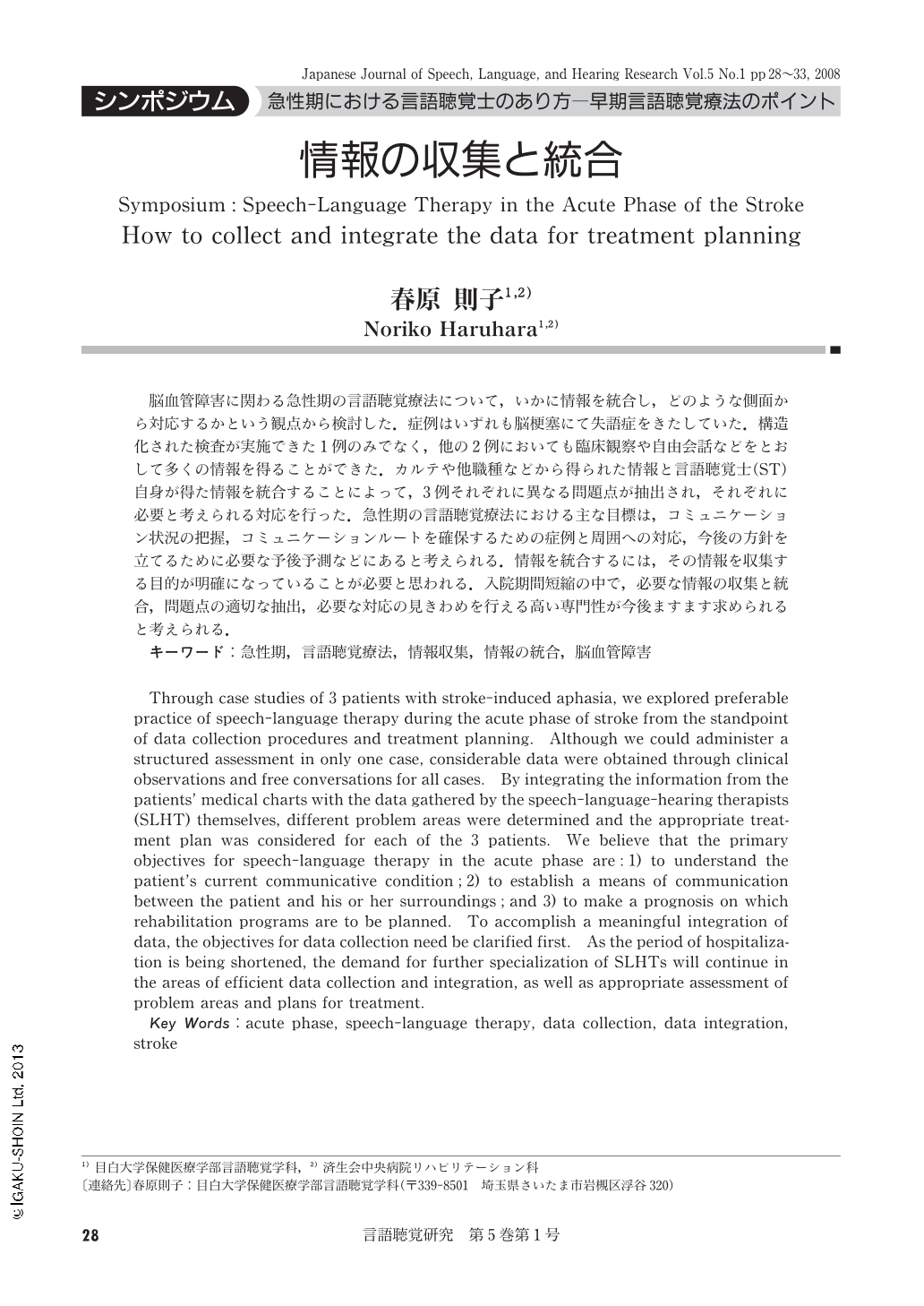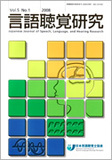Japanese
English
- 有料閲覧
- Abstract 文献概要
- 1ページ目 Look Inside
- 参考文献 Reference
- サイト内被引用 Cited by
脳血管障害に関わる急性期の言語聴覚療法について,いかに情報を統合し,どのような側面から対応するかという観点から検討した.症例はいずれも脳梗塞にて失語症をきたしていた.構造化された検査が実施できた1例のみでなく,他の2例においても臨床観察や自由会話などをとおして多くの情報を得ることができた.カルテや他職種などから得られた情報と言語聴覚士(ST)自身が得た情報を統合することによって,3例それぞれに異なる問題点が抽出され,それぞれに必要と考えられる対応を行った.急性期の言語聴覚療法における主な目標は,コミュニケーション状況の把握,コミュニケーションルートを確保するための症例と周囲への対応,今後の方針を立てるために必要な予後予測などにあると考えられる.情報を統合するには,その情報を収集する目的が明確になっていることが必要と思われる.入院期間短縮の中で,必要な情報の収集と統合,問題点の適切な抽出,必要な対応の見きわめを行える高い専門性が今後ますます求められると考えられる.
Through case studies of 3 patients with stroke-induced aphasia, we explored preferable practice of speech-language therapy during the acute phase of stroke from the standpoint of data collection procedures and treatment planning. Although we could administer a structured assessment in only one case, considerable data were obtained through clinical observations and free conversations for all cases. By integrating the information from the patients' medical charts with the data gathered by the speech-language-hearing therapists (SLHT) themselves, different problem areas were determined and the appropriate treatment plan was considered for each of the 3 patients. We believe that the primary objectives for speech-language therapy in the acute phase are:1) to understand the patient's current communicative condition;2) to establish a means of communication between the patient and his or her surroundings;and 3) to make a prognosis on which rehabilitation programs are to be planned. To accomplish a meaningful integration of data, the objectives for data collection need be clarified first. As the period of hospitalization is being shortened, the demand for further specialization of SLHTs will continue in the areas of efficient data collection and integration, as well as appropriate assessment of problem areas and plans for treatment.

Copyright © 2008, Japanese Association of Speech-Language-Hearing Therapists. All rights reserved.


